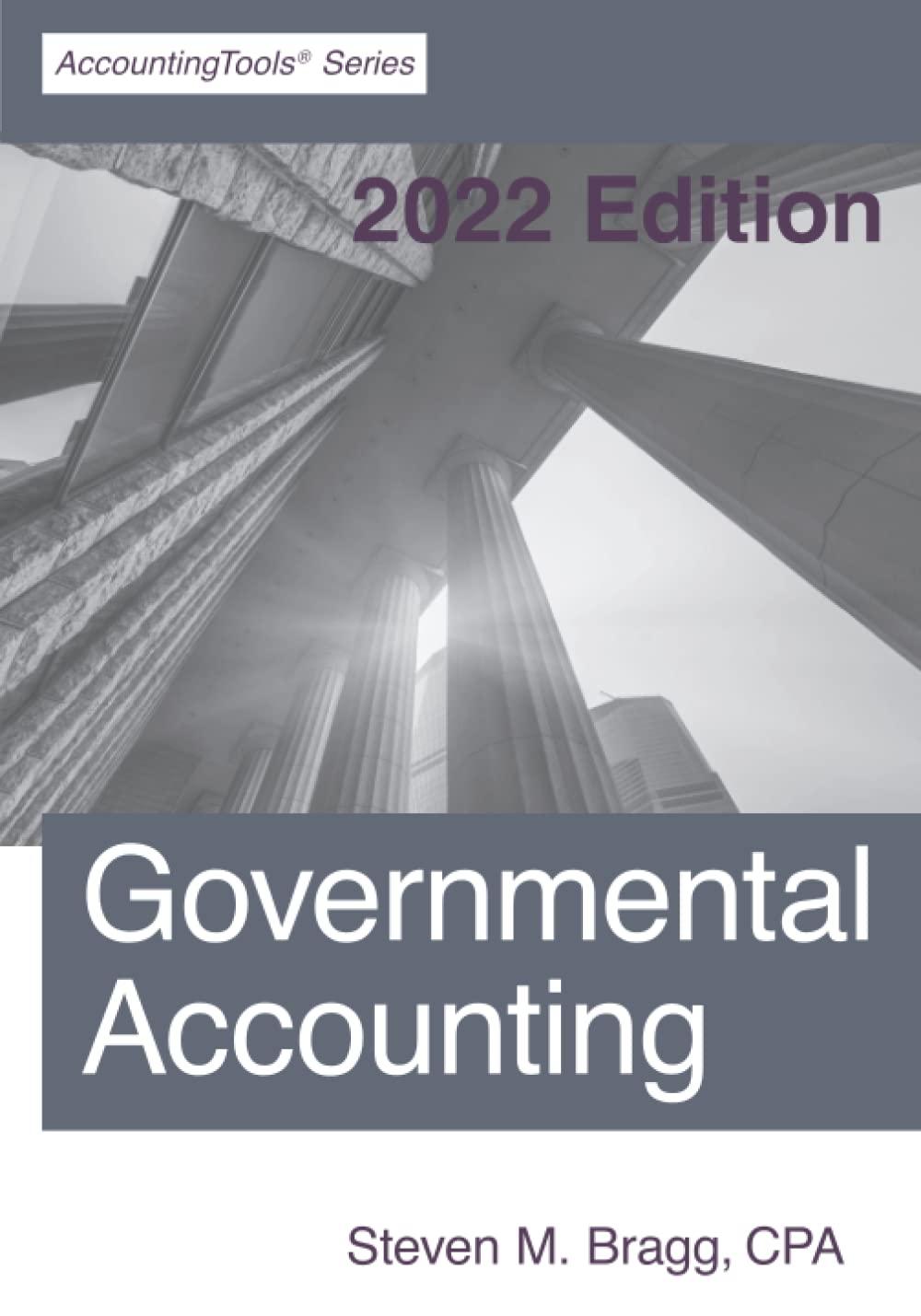Question
PLEASE ANSWER ALL MCQS 1. Do-Good Inc. is a not-for-profit organization that was formed on January 1, 2020. Do-Good has a December 31 year end.
PLEASE ANSWER ALL MCQS
1. Do-Good Inc. is a not-for-profit organization that was formed on January 1, 2020. Do-Good has a December 31 year end. It has an accounting policy of capitalizing and amortizing its capital assets. On April 1, 2020, Do-Good purchased equipment costing $8,000. The equipment is estimated to have a useful life of 4 years, with no residual value at that time. This transaction was the only transaction that took place to date. The equipment was purchased from an unrestricted contribution of $8,000. In which fund would the receipt of the unrestricted contribution be recorded?
Multiple Choice
a) The general fund
b) The endowment fund
c) The capital fund
2. A not-for-profit organization is required to record the donation of capital assets at:
Multiple Choice
a) fair value.
b) net realizable value.
c) replacement cost.
3. Section 4433 contains a compromise provision applicable to small NFPOs. Which of the following statements pertaining to a small NFPO is false?
Multiple Choice
a) A small NFPO is exempt from having to capitalize and amortize tangible capital assets.
b) A small NFPO can choose to expense a capital asset when it is acquired.
c) The small NFPO is exempt from having to record donated capital assets at fair value.
4. A business combination involves a contingent consideration. It is considered 70% probable that a payment of $500,000 will become payable three years after the acquisition date. Using a 7% discount rate, what liability should be recorded for the contingent consideration on the acquisition date?
Multiple Choice
a) $408,149
b) $500,000
c) $285,704
5. Which of the following statements is correct?
Multiple Choice
a) If the functional currency of the foreign operation is different than the parent's functional currency, depreciation and amortization must be translated using closing rates.
b) If the functional currency of the foreign operation is different than the parent's functional currency, depreciation and amortization are translated using average rates.
c) If the functional currency of the foreign operation is the same as the parent's functional currency, depreciation and amortization must be translated using closing rates.
6. Pubco Corporations wholly-owned European subsidiary has a European dollar functional currency. In translating its account balances into Canadian dollars for reporting purposes, which one of the following accounts would be purely translated at historical exchange rates?
Multiple Choice
a) Notes Payable.
b) Accounts Receivable.
c) Common Shares.
7. If the functional currency of a foreign operation is different than the parent's, functional currency, how are exchange gains and losses to be reported?
Multiple Choice
a) As part of other comprehensive income.
b) As part of the non-controlling interest.
c) As part of the acquisition differential amortization.
8. Which of the following statements is correct?
Multiple Choice
a) If the functional currency of the foreign operation is different than the parent's functional currency, the non-monetary items recorded at cost must be translated using closing rates.
b) If the functional currency of the foreign operation is the same as the parent's functional currency, the non-monetary items recorded at cost must be translated using closing rates.
c) If the functional currency of the foreign operation is different than the parent's functional currency, the non-monetary items recorded at cost must be translated using average rates.
9. Which one of the following best explains how a hedge accomplishes its object to reduce or eliminate exchange rate risk?
Multiple Choice
a) It creates a new payable to match the foreign currency payable.
b) It eliminates the foreign currency receivable or payable.
c) It creates a new receivable to match the foreign currency payable.
10. What are speculative forward exchange contracts?
Multiple Choice
a) Hopefully used to make a profit for the company.
b) All of the items describe a speculative forward exchange contract.
c) Contracts not tied to other transactions.
Step by Step Solution
There are 3 Steps involved in it
Step: 1

Get Instant Access to Expert-Tailored Solutions
See step-by-step solutions with expert insights and AI powered tools for academic success
Step: 2

Step: 3

Ace Your Homework with AI
Get the answers you need in no time with our AI-driven, step-by-step assistance
Get Started


